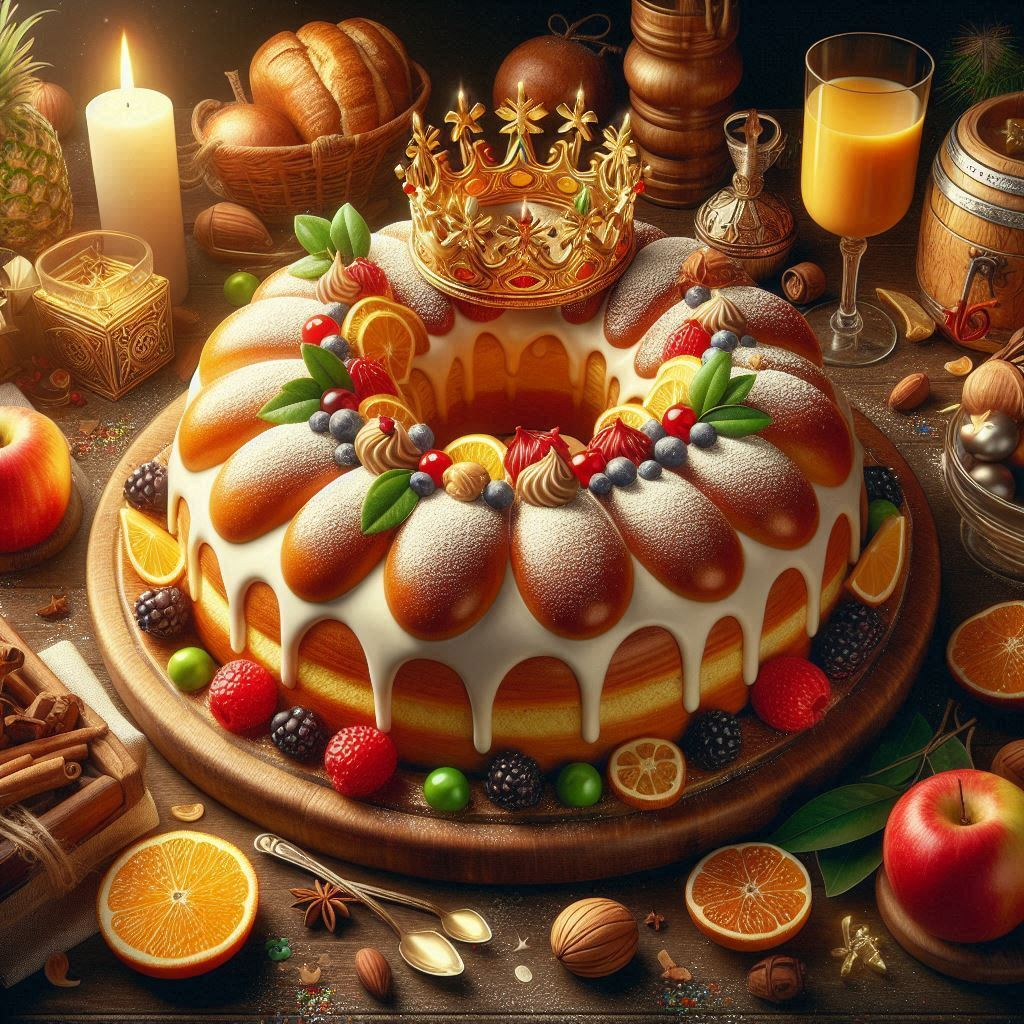
Roscón de Reyes: A Sweet Tradition Steeped in History
The Roscón de Reyes, or “King’s Ring,” is a delectable Spanish dessert that holds a special place in the country’s culinary and cultural heritage. This ring-shaped pastry, adorned with candied fruit and a hidden figurine, is traditionally enjoyed on the Feast of the Epiphany, which commemorates the visit of the Three Wise Men to the infant Jesus.
Historical Origins
The Roscón de Reyes can trace its roots back to ancient Roman times, where a similar pastry known as “Saturnalia” was consumed during the Saturnalia festival. This festival, dedicated to the god Saturn, was a time of feasting and merrymaking. The round shape of the pastry symbolized the cyclical nature of time and the promise of renewal.
Over the centuries, the Roscón de Reyes evolved and became associated with the Christian tradition. In the 14th century, it was customary in Spain to bake a bean into the pastry, and whoever found it would be crowned “king” or “queen” for the day. This practice persists today, with a small figurine, often representing one of the Three Wise Men, being hidden inside the Roscón.
Preparation: A Labor of Love
Creating a Roscón de Reyes is a labor of love that requires patience and skill. The dough is typically made with flour, sugar, eggs, butter, and yeast. It is then kneaded until it becomes smooth and elastic. The dough is then shaped into a ring and left to rise.
Once the dough has risen, it is time to decorate the Roscón. The traditional topping includes candied fruit, such as cherries, oranges, and lemons. These fruits symbolize the jewels and gifts brought by the Three Wise Men. The Roscón is then brushed with egg wash and baked until golden brown.
Variations and Regional Differences
While the basic ingredients and preparation methods remain the same, there are regional variations in the Roscón de Reyes. In some areas, it is filled with whipped cream or custard, while in others, it is simply served plain. The size of the Roscón can also vary, with some weighing up to several kilograms.
Cultural Significance
The Roscón de Reyes is more than just a dessert; it is a symbol of tradition and family. It is customary for families to gather on the Feast of the Epiphany to share a Roscón and celebrate the arrival of the Three Wise Men. The person who finds the figurine is said to have good luck for the coming year.
Conclusion
The Roscón de Reyes is a delectable treat that has delighted generations of Spaniards. Its rich history, intricate preparation, and cultural significance make it a beloved part of Spanish cuisine. Whether enjoyed as a sweet indulgence or shared as a family tradition, the Roscón de Reyes continues to captivate hearts and taste buds alike.



